
Etica & Cine
Scope & Guideline
Illuminating Ethics in Visual Storytelling
Introduction
Aims and Scopes
- Psychoanalytic Film Criticism:
The journal explores the relationship between psychoanalysis and cinema, examining how film can reflect and influence psychological states and societal norms. - Ethics and Human Rights in Film:
It addresses themes of ethics and human rights, analyzing how films depict moral dilemmas, social justice, and cultural trauma. - Cinematic Representations of Identity:
The journal investigates how cinema portrays various identities, including gender, race, and sexuality, and the implications of these representations. - Cinematic Aesthetics and Philosophy:
It engages with philosophical questions surrounding aesthetics in film, such as the nature of reality and the human experience as depicted through cinematic art. - Cultural and Political Critique:
The journal often critiques cultural and political dimensions within cinema, evaluating how films respond to and shape societal discourses.
Trending and Emerging
- Hybrid and Transgressive Bodies:
An increasing focus on the representation of hybrid and transgressive bodies in cinema reflects contemporary discussions on identity, gender fluidity, and posthumanism. - Psychoanalysis and Memory:
Themes relating to memory—particularly in the context of psychoanalysis—are gaining traction, exploring how films engage with personal and collective memory. - Environmental and Societal Critique:
A trend towards analyzing the relationship between cinema and ecological concerns is emerging, emphasizing how films address environmental crises and societal challenges. - Digital and Technological Discourse:
There is a growing interest in the impact of digital technology on cinema, including discussions around artificial intelligence and the implications of digital storytelling. - Interdisciplinary Approaches:
The journal increasingly embraces interdisciplinary methods, combining insights from psychology, philosophy, and cultural studies to deepen the analysis of films.
Declining or Waning
- Traditional Narrative Structures:
There appears to be a decreasing focus on conventional narrative analyses, as scholars increasingly favor exploring non-linear storytelling and experimental forms in cinema. - Historical Film Analysis:
The emphasis on analyzing historical films has lessened, possibly due to a growing interest in contemporary issues and the representation of current societal challenges. - Mainstream Genre Criticism:
Critiques of mainstream film genres, such as romantic comedies or action films, seem to be less prominent, suggesting a shift towards more avant-garde and independent cinema studies. - Focus on Western Cinema:
There is a noticeable decline in the analysis of Western cinema, with a growing inclination towards exploring global cinema and non-Western narratives. - Film Reviews and Summaries:
The journal has moved away from traditional film reviews or summaries, focusing more on theoretical and philosophical discussions rather than descriptive critiques.
Similar Journals
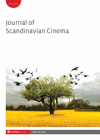
Journal of Scandinavian Cinema
Celebrating the Rich Tapestry of Scandinavian CinemaThe Journal of Scandinavian Cinema, established in 2014 and published by INTELLECT LTD, serves as a premier platform dedicated to the interdisciplinary field of film studies with a specific focus on Scandinavian cinema. With an impressive Q2 category ranking in Visual Arts and Performing Arts for 2023, and a Scopus rank placing it in the top 62nd percentile of its category, this journal is instrumental in advancing scholarly dialogue within the arts community. The journal strives to explore and critique cinematic expressions from the Nordic countries, contributing to a nuanced understanding of cultural narratives and filmic innovations. Committed to fostering accessibility and engagement, it caters to a diverse audience including researchers, professionals, and students keen to delve into the artistic, cultural, and political dimensions of cinema. The Journal of Scandinavian Cinema is essential for anyone interested in the evolution and impact of film in the Scandinavian context, promising rich insights and a robust collection of scholarly articles.

Asian Cinema
Illuminating the Cultural Narratives of Asian CinemaAsian Cinema is a distinguished academic journal dedicated to exploring the vibrant landscape of cinema across Asia, published by INTELLECT LTD, a recognized name in scholarly publishing. With its ISSN 1059-440X and E-ISSN 2049-6710, this journal has carved a niche within the realms of Communication and Visual Arts and Performing Arts, holding a 2023 Q4 ranking in Communication and a more favorable Q2 ranking in Visual Arts and Performing Arts. Operating out of the UK, specifically at THE MILL, PARNALL RD, BRISTOL BS16 3JG, ENGLAND, Asian Cinema provides a platform for interdisciplinary dialogues, critiques, and analyses that contribute significantly to the understanding of cinema as a cultural artifact. Acknowledged for its robust contribution to scholarly research, the journal commands a Scopus rank of 151 out of 667 in Visual Arts and Performing Arts, placing it in the 77th percentile, while achieving a 366 out of 511 rank in Communication, reflecting its ongoing relevance in the field. Although it operates under a traditional access model, Asian Cinema remains vital for researchers, professionals, and students alike, enriching academic discourse and providing valuable insights into the rapidly evolving cinematic practices across Asia.
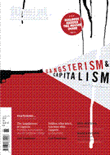
Film International
Redefining Film Criticism for a New Era.Film International is a prominent journal dedicated to the exploration of film and its cultural, social, and artistic significance. Published by INTELLECT LTD, this journal serves as a platform for interdisciplinary studies in the field of film criticism, theory, and scholarship, contributing valuable insights from both established and emerging researchers. With an ISSN of 1651-6826 and an E-ISSN of 2040-3801, the journal is an essential resource for those engaged in the realms of communication, cultural studies, and visual arts, though it is currently classified in the lower quartiles of these fields (Q4). Noteworthy for its critical perspectives and diverse content, Film International enhances the dialogue surrounding cinematic practices and their impact on society. Researchers, professionals, and students can explore its rich assemblage of articles and reviews that reflect the evolving landscape of film studies, making it a significant addition to the academic community focused on the art of film.
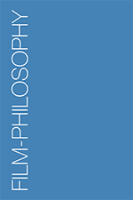
Film-Philosophy
Exploring the Nexus of Cinema and ThoughtFilm-Philosophy is an esteemed academic journal published by Edinburgh University Press, specializing in the intersection of film studies and philosophical discourse. Since its launch in 1998, this Open Access journal has provided a platform for scholarly debates and innovative research, allowing for free and unrestricted access to its content, which has significantly contributed to the global dialogue on visual culture. With a commendable impact illustrated by its Q1 ranking in Visual Arts and Performing Arts and Q2 in Philosophy, the journal sits within the top quartile of its field. Operating from the United Kingdom, Film-Philosophy is committed to fostering a multidisciplinary approach, inviting contributions from researchers, professionals, and students alike. By engaging with critical theories and the aesthetics of cinema, the journal stands as a vital resource for understanding the philosophical implications of film and its cultural significance.
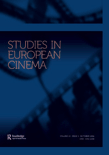
Studies in European Cinema
Celebrating the Artistry of European FilmmakingStudies in European Cinema is an esteemed journal published by Routledge Journals, Taylor & Francis Ltd, focusing on the multifaceted realms of European cinema and its contextual relevance. With an ISSN of 1741-1548 and an E-ISSN of 2040-0594, this journal provides a dynamic platform for researchers and practitioners in the fields of Communication, Visual Arts, and Performing Arts. As reflected by its recent Scopus rankings, it holds a respectable position in the Arts and Humanities with an 84th percentile rank, indicating its significance and impact in the scholarly community. While not entirely open access, Studies in European Cinema seeks to foster critical discourse and analysis from 2004 to 2024, covering a broad spectrum of topics related to film studies, cultural representations, and the evolving narratives within European cinematic practices. Engaging with diverse theoretical frameworks, the journal aims to contribute to the vibrant dialogue surrounding European cinema, making it an essential resource for academics, filmmakers, and students alike who are passionate about exploring cinematic expression in a European context.
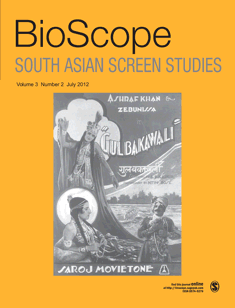
Bioscope-South Asian Screen Studies
Fostering Interdisciplinary Insights into Visual NarrativesBioscope-South Asian Screen Studies is an influential journal dedicated to advancing the field of screen studies in the South Asian context, published by SAGE Publications India Pvt Ltd. With an ISSN of 0974-9276 and an E-ISSN of 0976-352X, this journal spans a convergence of scholarly research from 2010 to 2024, providing a significant platform for interdisciplinary dialogue. Holding a Q3 rating in Communication and a Q2 rating in Visual Arts and Performing Arts in the 2023 category quartiles, it ranks 212th in its field on Scopus, reflecting its vital contribution to academic discourse. Bioscope aims to explore and critically analyze the rich tapestry of South Asian cinema, media, and performance arts, offering researchers, professionals, and students a valuable resource for deepening their understanding of regional and global cinematic narratives. Readers will find insightful articles that probe the cultural, social, and political dimensions of screen studies, making this journal an essential reference for anyone engaged in the evolving landscape of South Asian visual culture.

Film Fashion & Consumption
Decoding the Interplay of Style and Social NarrativesFilm Fashion & Consumption is an innovative academic journal published by INTELLECT LTD, focusing on the interdisciplinary exploration of the intertwined domains of film, fashion, and cultural consumption. Established in 2019, this journal has rapidly become a significant platform for scholars, practitioners, and students alike, contributing to critical discussions on how visual culture shapes consumer behaviors and social narratives. With an impact factor reflecting a growing influence in the fields of Communication, Cultural Studies, History, and Visual Arts, it holds respectable positions in its respective quartiles as of 2023. Although it is not an open-access journal, it provides essential insights and research articles that inform and challenge prevailing notions around media and style. The journal's Scopus rankings highlight its relevance, particularly within the realms of Visual Arts and Cultural Studies, making it a valuable resource for anyone engaged in the analysis of contemporary visual trends.

Canadian Journal of Film Studies-Revue Canadienne d Etudes Cinematographiques
Innovating Critical Discourse in Film StudiesCanadian Journal of Film Studies-Revue Canadienne d'Études Cinématographiques is a distinguished publication dedicated to the exploration of film studies within the context of Canadian cinema and global visual arts. Published by University of Toronto Press Inc., this journal offers a platform for innovative and critical scholarship, having achieved a notable Q2 ranking in the Visual Arts and Performing Arts category for 2023, with an impressive Scopus rank of 207 out of 667, positioning it in the 68th percentile among peers. With a continuous publication record since its established years from 1998 to 2001 and 2004 to 2024, it has become an essential resource for researchers, professionals, and students interested in the evolving landscape of film and cinema. The journal not only addresses theoretical perspectives but also engages with contemporary practices, thereby fostering a deeper understanding of cinematic arts. Despite not offering open access, it remains a vital repository of knowledge for those seeking to advance their studies and contribute to the discourse in film studies.

CINEJ Cinema Journal
Connecting Theory and Practice in Film Research.CINEJ Cinema Journal, published by the University of Pittsburgh Library System, stands as a pivotal platform for scholarly discourse in the dynamic field of cinema studies. With an ISSN of 2159-2411 and an E-ISSN of 2158-8724, this Open Access journal has been dedicated to disseminating high-quality research since its inception in 2011. CINEJ provides an essential resource for researchers, practitioners, and students alike, exploring varied dimensions of cinema, including its cultural, historical, and technological implications. The journal is committed to fostering interdisciplinary dialogue, making it a vital asset for those seeking to deepen their understanding of cinema as an art form and social phenomenon. By engaging with contemporary issues and trends in the cinematic landscape, CINEJ encourages contributions that illuminate the intersection of film and social inquiry, ensuring its relevance in today’s academic ecosystem.

Feminist German Studies
Innovating Feminist Perspectives in Cultural NarrativesFeminist German Studies, published by UNIVERSITY OF NEBRASKA PRESS, is a pivotal academic journal dedicated to exploring the intersection of feminism and German studies, providing a platform for innovative scholarship in the fields of cultural studies, gender studies, and linguistics. With an ISSN of 2578-5206 and an E-ISSN of 2578-5192, this journal aims to foster critical discourse on topics pertinent to gender dynamics within German-speaking contexts. Although currently classified in Q4 quartiles across various categories, including Arts and Humanities and Cultural Studies, its innovative contributions serve as a catalyst for engaging with contemporary feminist issues. The journal spans a converged publication period from 2018 to 2024, drawing together diverse academic contributions that challenge traditional narratives and promote new understandings. While not an open-access journal, Feminist German Studies remains an essential resource for researchers, professionals, and students committed to advancing feminist thought and scholarship within the increasingly relevant context of German studies.